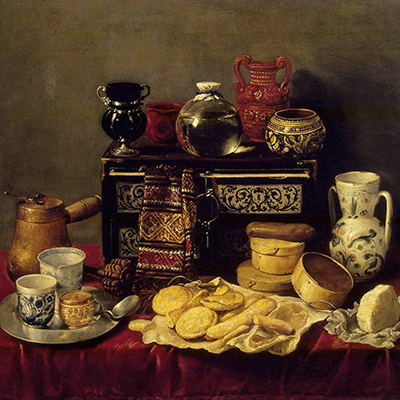Inside a Townsend Center Working Group

Recently I sat down with Keith Budner, a graduate student in the comparative literature department, and Grace Harpster, a graduate student in the history of art department, to discuss the working group that they coordinate, entitled “Mobilities and Materialities of the Early Modern World.”
This working group is one of nearly 70 such groups supported by the Townsend Center. With topics ranging from contemporary poetry and poetics, Japan studies, and rabbinic literature, working groups offer an interdisciplinary space for graduate students and faculty from various humanities departments to meet and discuss topics of relevance and interest.
The Mobilities and Materialities group looks at cross-cultural connections in the early modern period, particularly in relation to art, artefacts, and materials. Through the use of blogs, articles, and scholarly papers, they engage with topics involving international networks and historical engagements with materials. Additionally, the group has expanded its interests to take up recent debates on topics such as Eurocentrism and the role of the humanities in academic institutions.
The group’s wide-ranging topic has created a highly diverse, interdisciplinary platform for discussion. In addition to the coordinators’ home departments of comp lit and history of art, a variety of academic units are represented in the group, including medieval studies, anthropology, and history, giving members an opportunity to expand their scope and learn about how other disciplines approach scholarly questions.
I was interested to learn more about why Keith and Grace decided to join Mobilities and Materialities of the Early Modern World. For both, the working group introduced them to new intellectual questions and approaches that helped broaden and enrich their own research. Keith, a comparative literature student, found himself increasingly incorporating art historical questions into his dissertation. The working group provided him with a community whose rigorous study of objects and visual culture he found stimulating. Grace, an art history student studying Renaissance Italian art, wanted to explore topics beyond the strict geographical zone on which her dissertation was focused.
While both Keith and Grace are deeply interested in the working group’s topic, both agree that the most rewarding part of the experience is the meaningful interactions between grad students of different departments, backgrounds, and interests. On a campus as big as Berkeley’s, it can be difficult to find ways to actively engage with students in different fields. Additionally, once students have moved past the seminar phase and begin to focus solely on their dissertations, the PhD program can feel isolating and limiting.
But through the working group, Keith and Grace have formed friendships with a variety of students and professors, and have had the opportunity to learn about others’ work as well as share their own. The working group provides a small space for conversation and learning beyond the dissertation process.
This semester, in addition to hosting their regular meetings and smaller events, the group organized a half-day conference on “Xenophobia and Difference in the Premodern Mediterranean World.” The event, which reflected the intellectual diversity characteristic of the working group, explored issues surrounding xenophobia in the early modern period, and featured three speakers: Jake Nabel, a postdoc at the Getty Research Institute; Sharon Kinoshita of the UC Santa Cruz literature department; and Barbara Fuchs of the UCLA English department. Their presentations led both Keith and Grace to find surprising connections between their own research and seemingly unrelated topics and fields. Grace noted that throughout her involvement with the working group, she has learned that even if something does not seem relevant on the surface, one need only take a deeper look to see how all disciplines connect to and inform each other in some way.
Working groups are a fantastic place for graduate students and faculty to connect and engage. View a full list of Working Groups here.